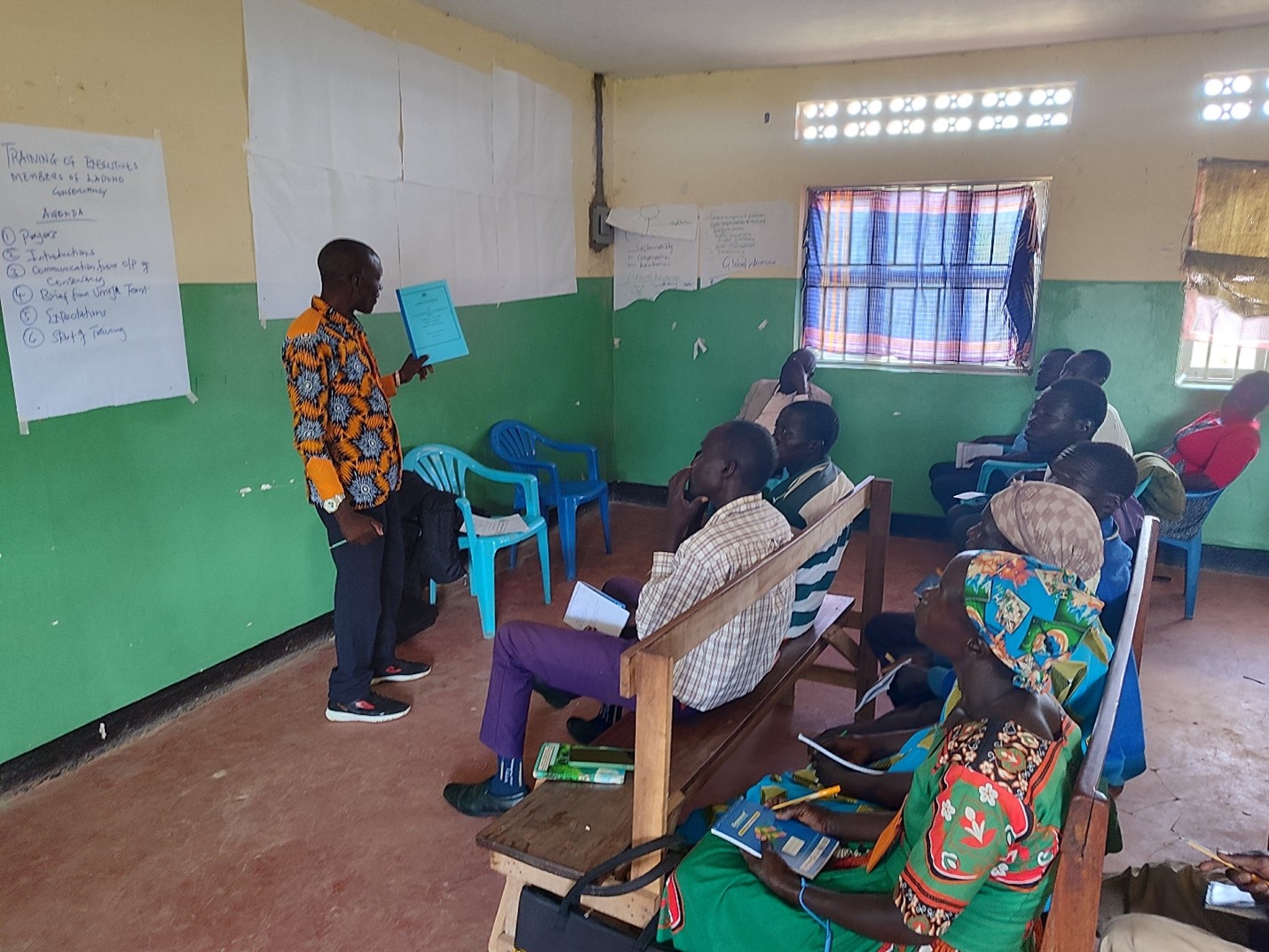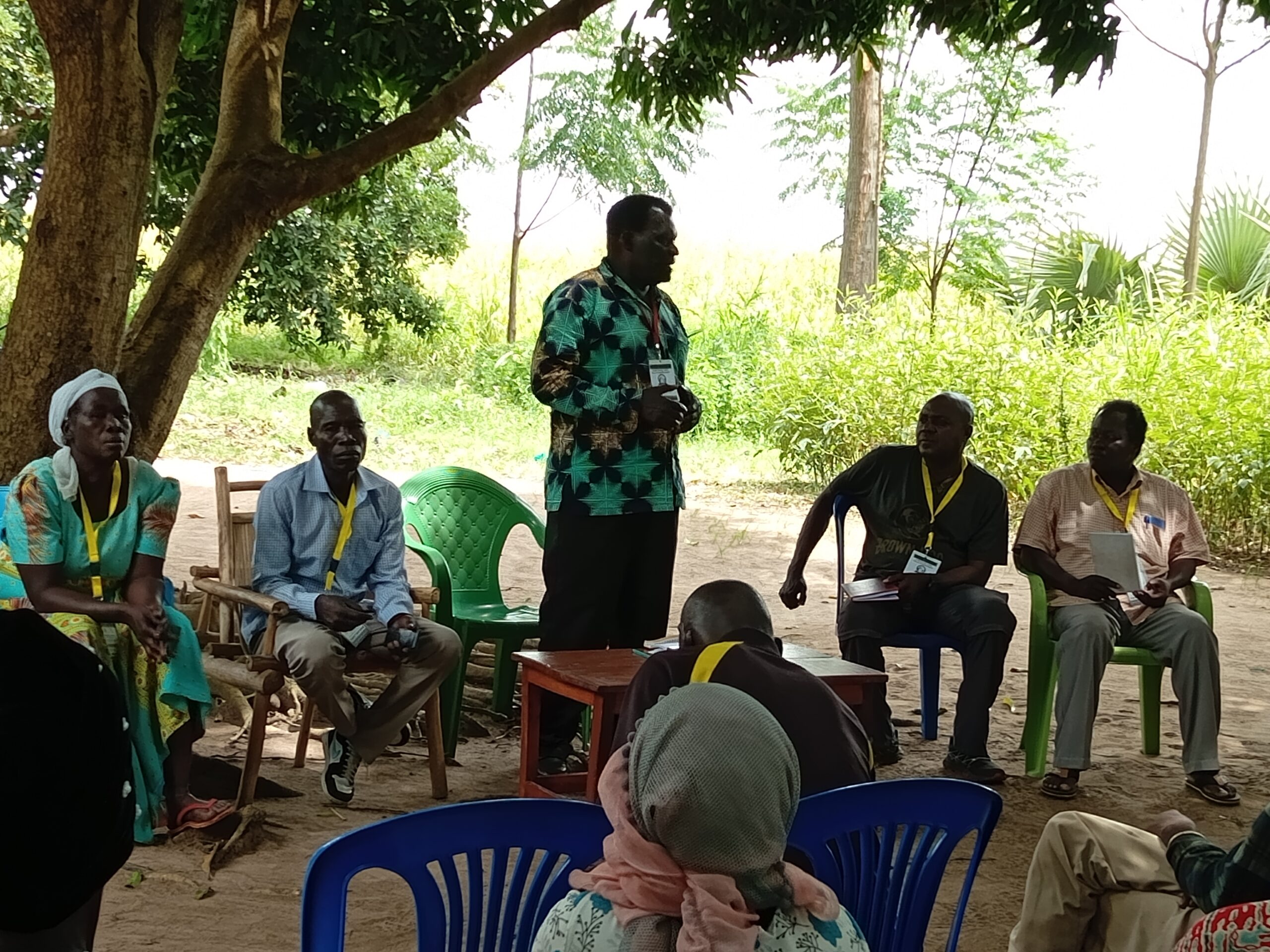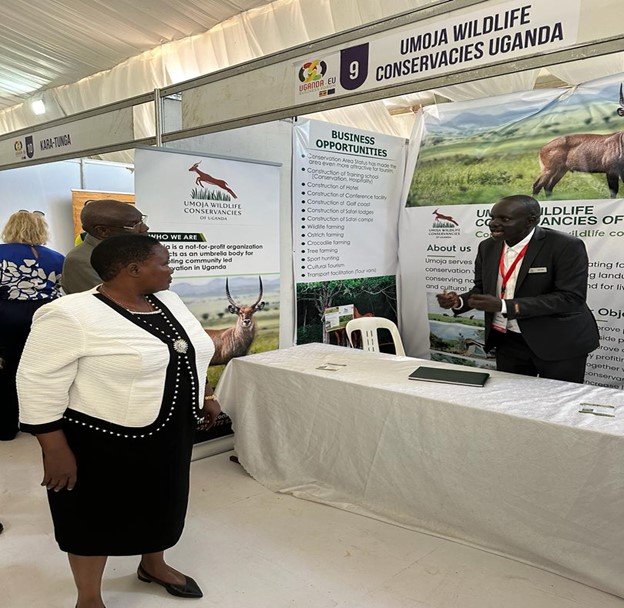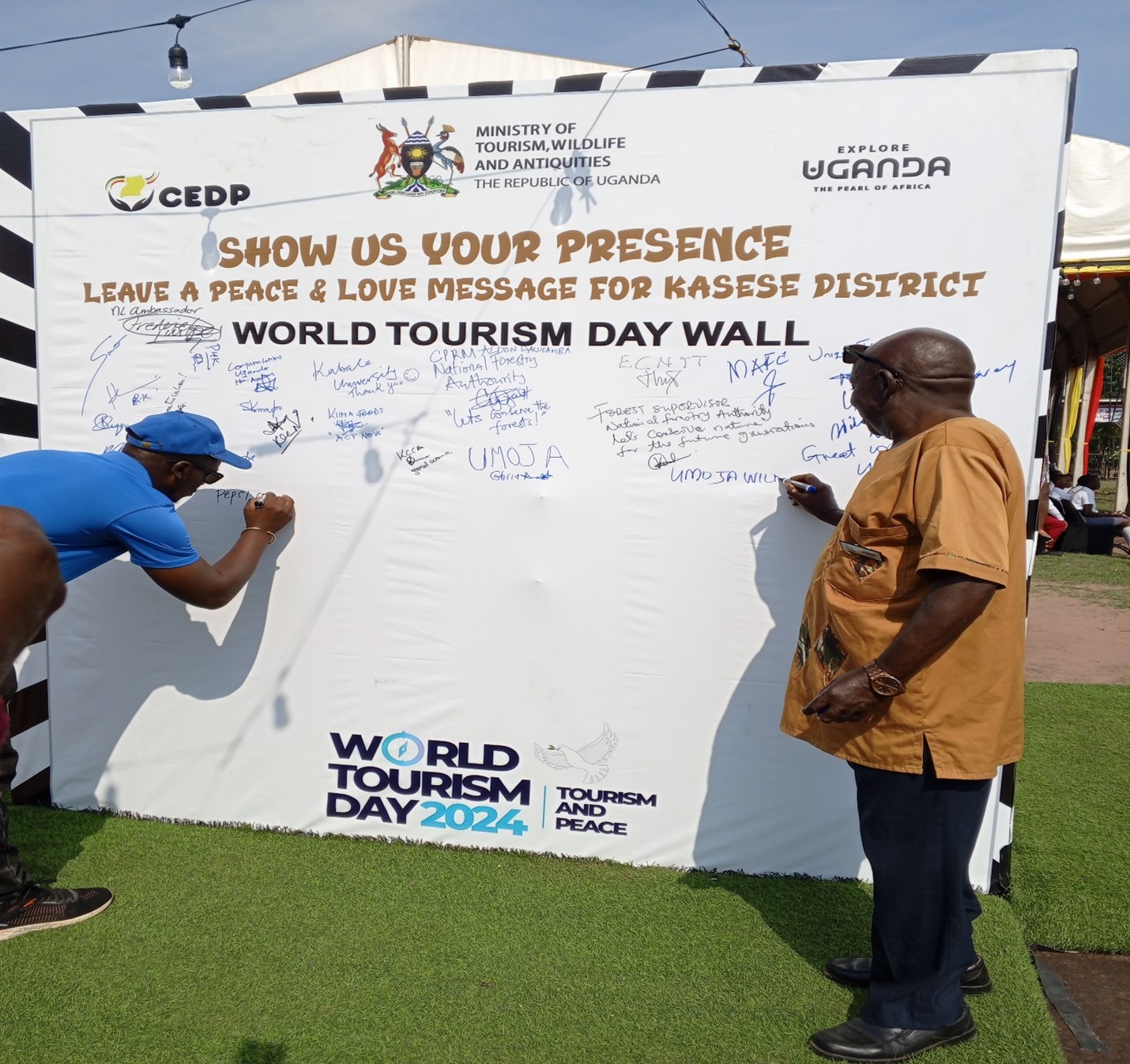Executive Summary
In 2024, Umoja focused on advancing conservancy management and governance, promoting recognition of conservancy, strengthening partnerships and building internal organizational capacity. Key project goals aimed at achieving functional, sustainable and recognized conservancies in Uganda. This report outlines the activities conducted, key results, lessons learned, challenges and recommendations. The four pilot conservancies are; Murchison Aswa Falls Conservancy (MAFC), Layugi Conservancy, Weny-Weny Conservancy and Rurambira Conservancy.
KEY ACTIVITIES COMPLETED IN COMPARISON WITH PLANNED ACTIVITIES UNDER EACH GOAL.
Goal 1: Establish sustainable and functional conservancies that yield tangible benefits.
Activity 1.1 Develop Conservancy management and governance guideline
Umoja team developed a draft conservancy governance and management guideline. The guideline developed provides standard procedures for administration (management structure and roles and responsibilities), steps in establishing conservancy, characteristics of a good conservancy, financial management, legal framework, possible conservancy programs and stakeholders’ engagement to improve conservancy efficiency.
It has been worked on remaining printing and dissemination.
Activity 1.2 Training of Conservancy Executive members on conservancy management and governance
Umoja team trained a total of 45 Conservancy executive members from the four pilot conservancies on conservancy governance and management. Key topics during the training included; steps in establishing conservancy, governance and management structure of a conservancy, characteristics of a good conservancy, functions of a conservancy and programs within a conservancy. This training empowered the ExCom with skills to handle their day-to-day operations and strategic planning.

Photo taken during ExCom Training in Layugi Conservancy
The team also conducted a participatory mapping exercise with ExCom members in each of the four-pilot conservancy. This was done to help conservancy leaders and members to know the exact boundary of the conservancy land. ExCom members appreciated this as it could prevent land conflicts among conservancy members and their neighbors.

Photo taken during participatory mapping exercise in Rurambira Conservancy
key result for goal 1
The four pilot conservancies now exhibit strong management structures, good management practices and drafted their conservancy concept document aimed at attracting fundings and investment for economic sustainability. (Recruitment of conservancy managers in MAFC, Layugi and Wenyweny)
Disaggregation of participants in the ExCom Training program
| Name of conservancy | #Males | #Females | Total |
| Wenyweny | 13 | 2 | 15 |
| Rurambira | 11 | 4 | 15 |
| Layugi | 12 | 3 | 15 |
| MAFC | 13 | 2 | 15 |

Training of EXCOM members of MAFC
Activity 1.3 Disseminate the strategic plan.
- It was electronically shared after its launch
Goal 2: Recognition of conservancies as a viable land use model.
Activity 2.1 Stakeholder mapping
Conducted a thorough mapping of stakeholders in conservation, government and local communities, resulting in a robust database of contacts that led to improved communication and engagement with relevant stakeholders.
Activity 2.2 Create community awareness through community outreach program
The team also conducted outreach program in MAFC, Weny-Weny, Layugi and Rurambira conservancy to increase public awareness and understanding of the benefits and importance of conservancies as a sustainable land use model. This involved meeting with local leaders, local residents together with conservancy ExCom and conservancy members (primary stakeholders) on day one and then secondary stakeholders within each conservancy on the second day. The outreach program enabled the conservancy Excom established strong partnerships, fostered stronger networks and collaborations within and outside conservancies.
Disaggregation of participants in the outreach program
| Name of Conservancy | #males | #females | total |
| Layugi | 95 | 40 | 135 |
| Rurambira | 105 | 30 | 135 |
| Weny-weny | 100 | 35 | 135 |
| MAFC | 115 | 20 | 135 |

Photo taken during outreach meeting in Layugi Conservancy
Activity 2.3 Advocate for policy support through side events/side meetings at existing events (wildlife policy review, World Wildlife Day, World Tourism Day)
- World wildlife day organized by UWA
- NY-Climate week
- WCS meeting and other meetings
- EU exhibition
- EU-symposium
- Meeting organized by MTWA in bomah
Umoja participated in national wildlife conference held on 22rd Feb 2024 at Uganda Museum. The event focused on improved conservation via the use of technology to better monitor wildlife distribution and illegal activities using various tools. The team requested these technological advancements be brought to conservancies as well to promote coexistence and benefits for both communities and wildlife.
Umoja participated in the 3rd Uganda- EU- Business Forum under the theme boosting trade and investments in key economic sectors that offer significant opportunities for European investors to develop partnerships with entrepreneurs in Uganda. The team joined the panel that discussed matters on sustainable tourism and highlighted on what roles conservancies play towards wildlife conservation and livelihood improvement. The team were also given a booth where they displayed a lot of information about conservancies and Umoja including the vision, mission, goals, objectives and activities. The booth was visited by a number of dignitaries including Rt Hon Prime Minister of Uganda

UMOJA BOOTH AT 3rd EU-UGANDA BUSINESS FORUM
In Sept, 2024, a team from Umoja secretariate together with representatives from Conservancies participated in World Tourism Day celebration under the theme tourism and peace. One member from Umoja made a brief presentation on the services offered by Umoja putting emphasis on community driven conservation programs especially among communities/landowners who have chosen wildlife conservation as land use option.

Photo courtesy of World Tourism Day Held in Kasese District
Activity 2. 4 Publish news and information about Umoja and conservancies on social media platforms.
Consistently published updates, news and informative content about Umoja’s activities in regards to approach to conservancy development in Uganda among other activities on Umoja’s social media platforms like LinkedIn, twitter, Instagram, Facebook and the official website to reach a wider audience and raise awareness.
Key results for goal 2
There has been increased community awareness of conservancies as viable land use option, with a positive shift in perception among local stakeholders.
Government institution particularly MTWA expressed interest in exploring policies that would recognize conservancies as sustainable land use options with plans underway for formal discussion next year,2025.
Goal 3: Foster increased institutional partnerships and collaborations to fortify the mission of conservancies.
Activity 3.1 Conduct a complete Umoja and conservancy stakeholder mapping to identify key stakeholders and engagement.
Conducted a thorough mapping of stakeholders in conservation, government and local communities, resulting in a robust database of contacts for future engagement and partnerships.
Activity 3.2 Organize engagement meetings with donors and other NGOs in conservation
Hosted and attended online and side meetings with conservation-oriented NGOs and donors identified from stakeholder mapping exercise and discussed matters focusing on shared goals and joint initiatives for conservancies.
- UNDP
- ADB/EU
- GIZ-CUSP
- TOTAL ENERGY
Activity 3.3 Develop conservancy business plans and strategies, and initiate steps for implementation to be implemented in the level.
Goal 4: Build a strong, well-established and coordinated organization.
Activity 4.1 Develop an organizational structure including job descriptions for relevant positions and proposed timelines.
Developed job description and formal staff employment contracts issued.
Activity 4.2 Identify current staff training needs and implement options to meet them
The team identified specific training needs and organized capacity building workshops for Umoja staff focusing on areas of governance and management, team building, reporting and documentation, communication and marketing. This was made possible with support of facilitators from Maliasili.
CSF- Three members from Umoja participated in an online course organized by the Conservation Strategy Fund’s Number for Nature Training Institute with financial support from African Nature- Based Tourism Platform. the team learned essential economic and financial concepts like cost benefit analysis that empowered us to effectively communicate the value of natural resources and engage with decision makers.
QUICKBOOKS-Umoja team received a short training organized by GIZ GCSP on QuickBooks desktop software. The team gained knowledge on how to use the software to enter financial records and generating quality financial reports.
M&E Capacity Development, a team from Umoja participated in a two days training organized by GIZ under the GCSP GCSP program. the team gained knowledge on how to do problem and objective tree analysis, stakeholders’ analysis, and designing a log frame.
Activity 4.3 Facilitate Umoja quarterly board meetings
Umoja board has successfully conducted 1st, 2nd and 3rd Umoja board quarterly meeting. Key issues discussed included; updates on activities, staff contracts, upcoming events, emerging funding opportunities and resource management procedures. This was done to streamline operations and enhance communication and decision making within the organization.
Activity 4.4 Develop a MEL framework
A draft MEL framework has been developed. Once finalized, it will be used to track and measure Umoja’s progress across its goals, ensuring data driven adjustments and ensuring project effectiveness.
Activity 4.5 Grow external communications via a newsletter (two times a year), social media accounts and website updates.
The team created and updated Umoja’s social media accounts like LinkedIn, twitter and Instagram increasing engagement and visibility of Umoja’s work. One newsletter was also published during the year highlighting Umoja’s progress and sharing success stories with stakeholders and partners.
Key results for goal 4
Umoja has strengthened its organizational capacity with improved internal communications and operational system.
The organization’s increased visibility and structured approach have attracted interest from donors and partners laying the foundation for future funding and support.
Lessons learned
Engaging local communities through conservation awareness campaigns and outreach programs significantly increased local community support and understanding of why they need to conserve wildlife on their land. This is evidence to why it is important to have community support and the need for consistent, culturally relevant communication to reinforce conservancy as a beneficial land use option.
Developing an effective organizational structure and staff training were vital steps for Umoja. Strengthening internal capacity through well-defined roles, recruiting more staff, staff trainings, review and board meeting allowed Umoja to effectively carryout operations indicating that internal readiness is crucial for project success.
Challenges identified during implementation
Capacity gaps within conservancy committee. Despite various training efforts, some conservancy committee members struggled to adopt new management and governance practices due to capacity gaps, a lack of prior experience or limited education on conservation management principle.
Limited funding for community outreach and advocacy restricted the extent and frequency of outreach activities and community programs especially in areas where conservation may be misunderstood or underappreciated. Radio talk show could not be conducted much as it was planned for due to limited funds.
Difficulty managing stakeholders’ expectations. Balancing diverse interest among conservancies and communities was challenging. Different stakeholders had varying expectations and priorities which sometimes made it difficult to align all parties on shared objectives.
Recommendations
Given the capacity challenges with some conservancy committees, there is need for longer term training perhaps involving mentorships and peer learning. These programs could offer more hands-on guidance particularly in conservancy management and strategic planning.
To manage and sustain stakeholders’ relationships, Umoja intends establish a formal stakeholders engagement framework that sets regular updates and participatory events. This could keep stakeholders informed, involved and invested in conservancy goals while aligning expectations and reducing misunderstanding.
Increase funding for advocacy and awareness. Umoja shall continue to chase diversified funding sources including grants and partnerships with international conservation NGOs. This will enable more extensive outreach programs and advocacy initiatives to emphasize the value of conservancies.
Prioritize MEL Activities. implementing MEL activities across all project goals can help Umoja track progress, assess project outcomes and adapt project strategies as needed. Regular feedback forms could allow Umoja identify challenges early, celebrate wins and make data driven decisions that can enhance project effectiveness and accountability.
Conclusion.
In 2024, Umoja made notable progress towards its goals, establishing functional and sustainable conservancies, improving recognition of conservancies as viable land use option, fostering partnerships and enhancing Umoja’s internal capacity. key achievements such as improved community awareness and stakeholders’ collaboration, have set ground for continued growth. Moving forward, Umoja aims to build on these successes by deepening partners engagement, expanding existing and supporting new conservancies and refining strategies to ensure sustainable impacts and policy recognition of conservancies as land use option.
